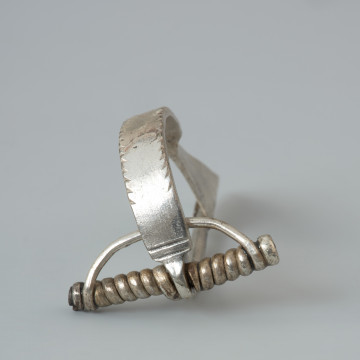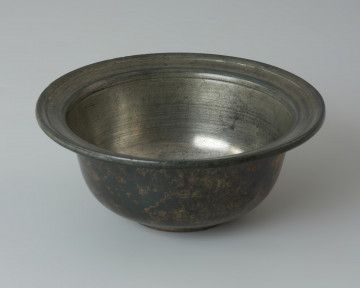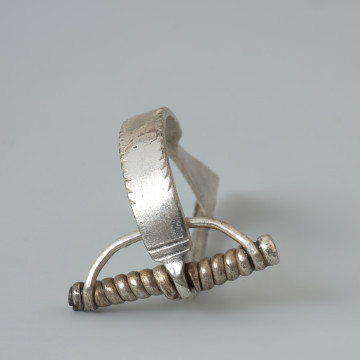
Tortoiseshell buckle
201 — 299
National Museum in Szczecin
Part of the collection: Antiquity
Bronze fibulae, differing in construction details, were used to fasten outer garments, gradually replacing bronze pins in Western Pomerania in the 3rd century BC. This fibula was found in the cemetery of the Wielbark culture in Żukowo, Stargard poviat, in the spring of 1933, during gravel extraction. An inhumation grave was then discovered, furnished with two identical bronze fibulae, decorated on the bows with zigzags along the edge and another two intersecting zigzag lines above the spring. The discovery was reported to the director of the museum in Szczecin, Otto Kunkel, who visited the place of the discovery, and his photographic documentation of that site has survived to this day. In the collection of Szczecin museum there is also a skull from a grave in Żukowo, other parts of the skeleton were lost. The Żukowo cemetery, although known since 1912, was not archaeologically examined until 1974 in connection with the opening of a gravel pit in Żukowo and the destruction of the cemetery. According to Ryszard Wołągiewicz from the National Museum in Szczecin, who led the excavations, about half of the necropolis was completely destroyed. He discovered only two cremation and two inhumation burials. At the same time, he carried out excavations in the settlement adjacent to the cemetery.
Bartłomiej Rogalski
Author / creator
Dimensions
cały obiekt: height: 2.4 cm, width: 4.6 cm
Object type
pin (fastener)
Technique
casting
Material
bronze
Creation / finding place
Owner
Muzeum Narodowe w Szczecinie
Identification number
Location / status

201 — 299
National Museum in Szczecin

National Museum in Szczecin

National Museum in Szczecin
DISCOVER this TOPIC
Museum of King Jan III's Palace at Wilanów
DISCOVER this PATH
Educational path